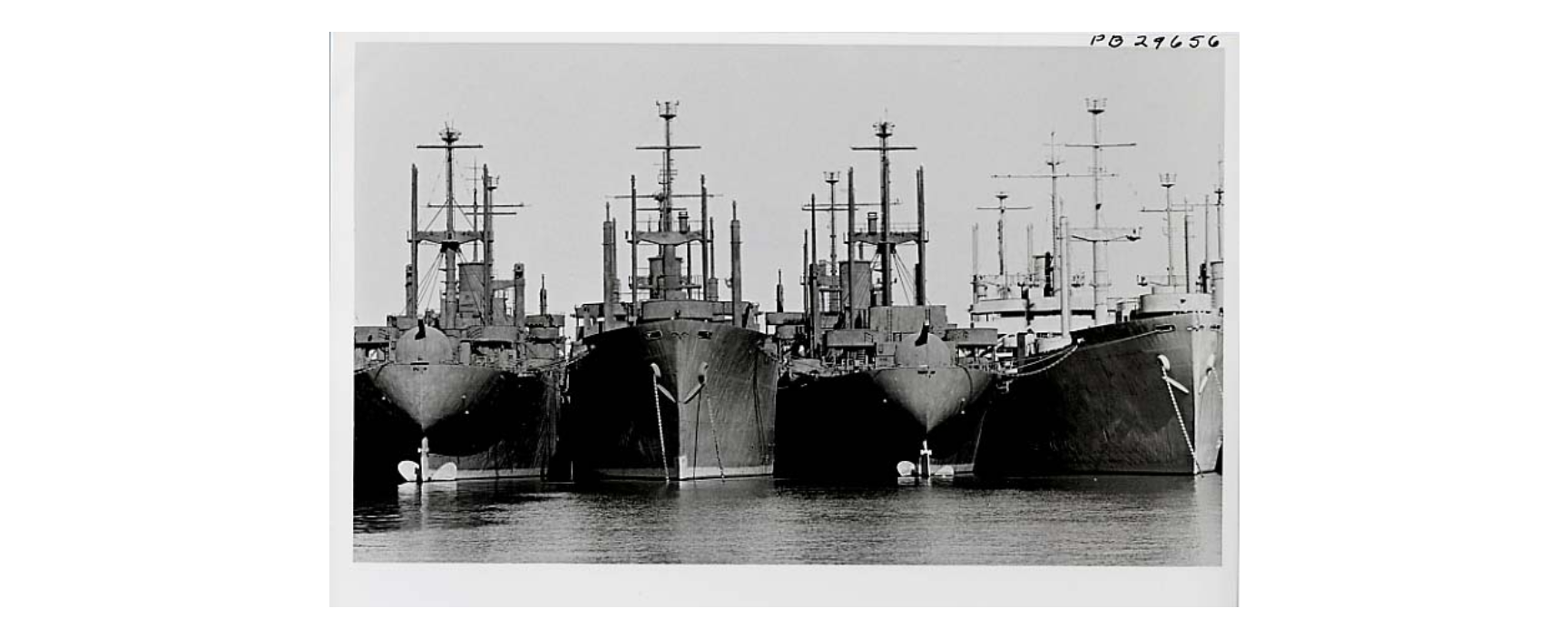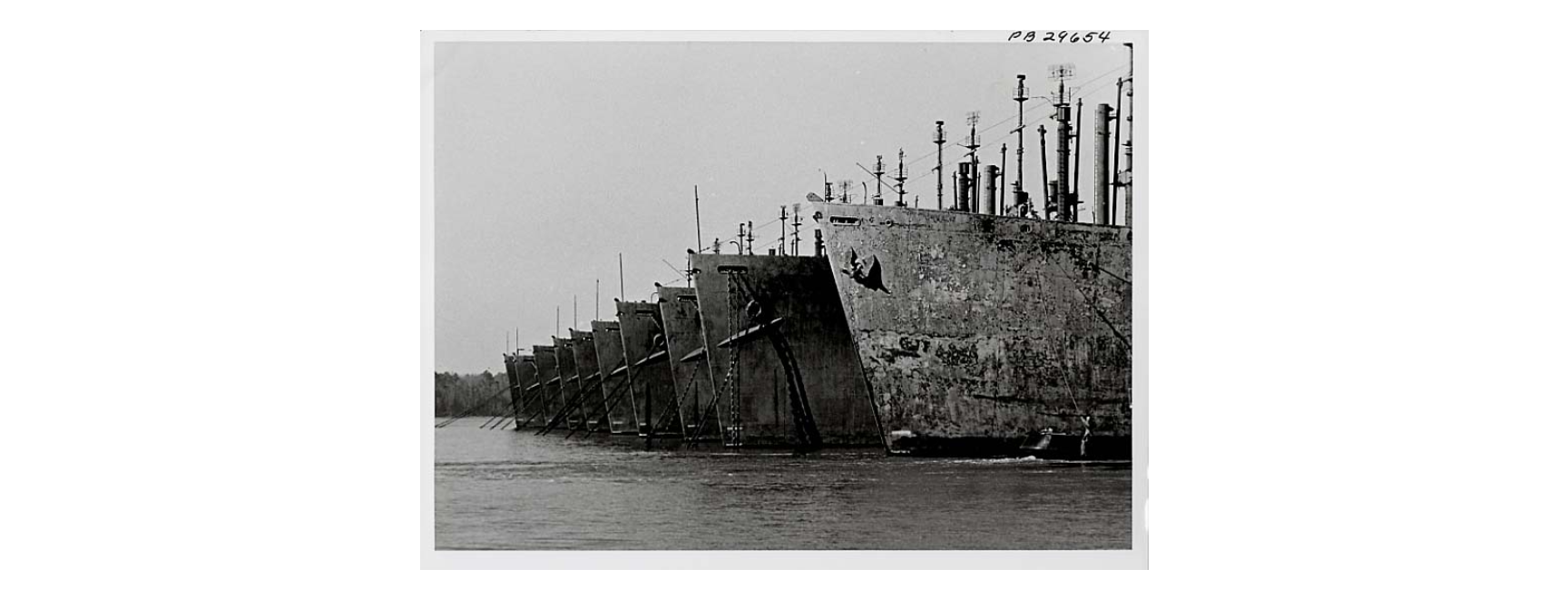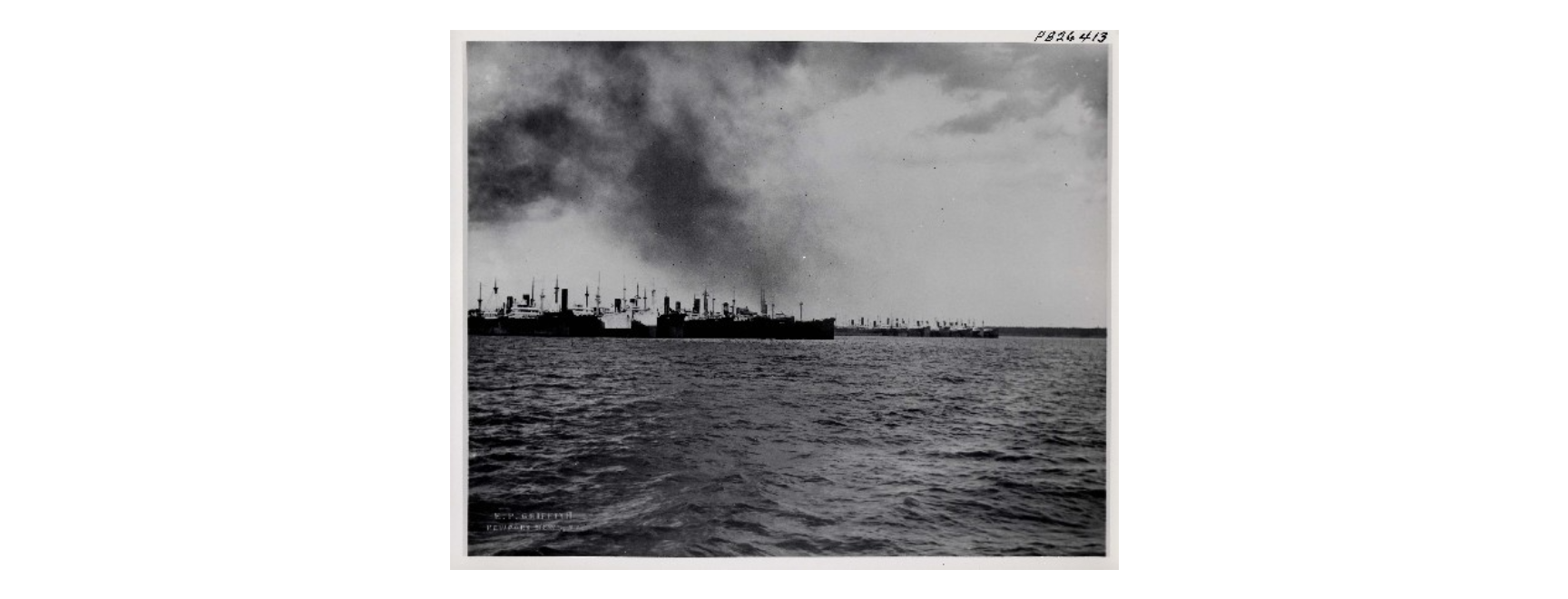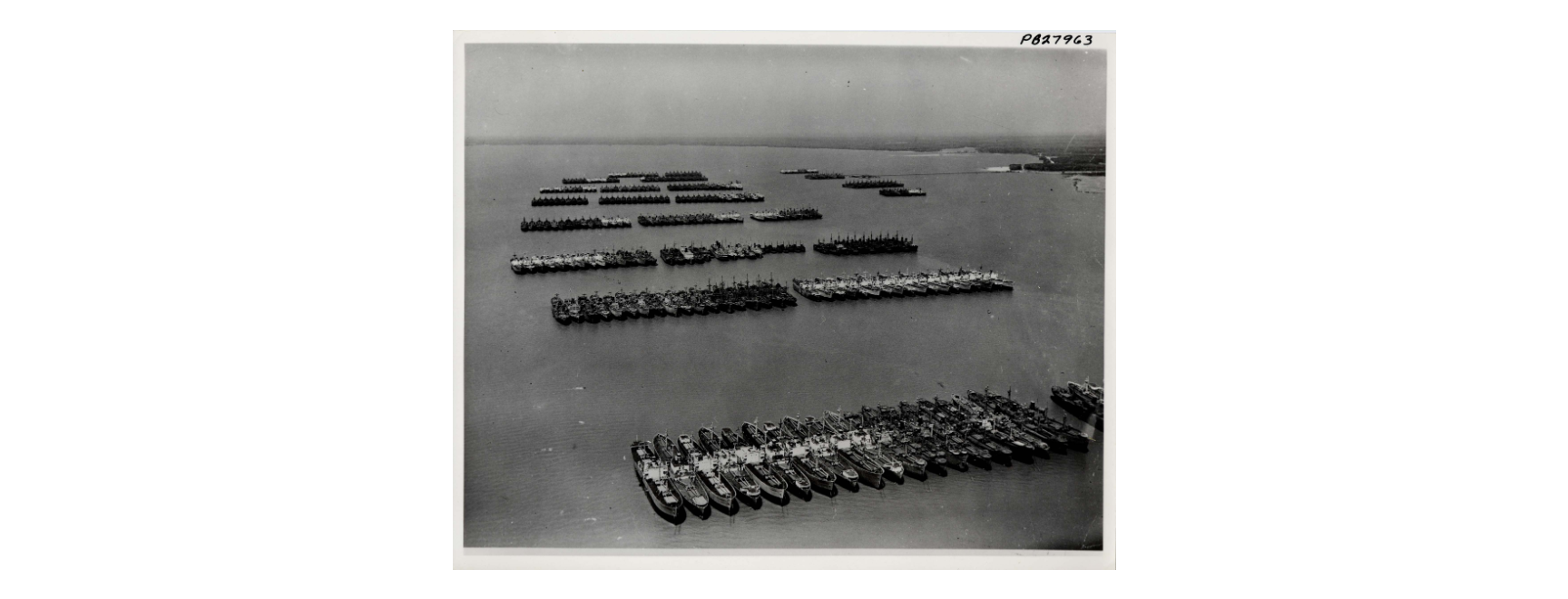A few weeks ago, on a late summer boat ride on the James River, I noticed the outlines of looming grey ships in the distance that I hadn’t seen before. “What are those?” I wondered aloud. “Oh, that’s the ghost fleet” my fiancé, piloting the boat, responded, “you haven’t heard of them before?” On that chilly evening in September, as I glanced over my shoulder back at the mysterious vessels, it all seemed a little spooky to me. As the sun set over the water, the creaky grey ships appeared hazy, almost like a figment of my imagination. From our vantage point on the dock in Williamsburg, the screams from nearby Busch Gardens roller coasters echoing in the background, it seemed like the perfect set for a Halloween movie. Call me dramatic, but I was intrigued to learn a little more about these ghostly vessels. A week before Halloween, this seemed like an appropriate time to share my maritime “ghost story” with you, dear readers!


The “Ghost Fleet”, although perhaps a fitting name, is a colloquial name for what is officially the James River Reserve Fleet (JRRF), the oldest of the eight original National Defense Reserve Fleet (NDRF) sites, and one of only three that are still in operation. The NDRF is overseen by the U.S. Maritime Administration, a division of the U.S. Department of Transportation. Since 1919, the James River has been a resting place (or perhaps a graveyard?) for retired ships. After World War I, the Navy and Merchant Marines stored their surplus wooden and steel-hulled ships in the river. Many of the wooden-hulled ships were eventually moved to Mallows Bay, Maryland [1]. By the advent of World War II, nearly 300 ships sat in the James River Reserve Fleet (JRRF), although they were all reactivated to serve in the conflict. After this, in 1946, Section 11 of the Merchant Ship Sales Act established that the National Defense Reserve Fleet would serve as a sort of insurance policy, a stand-by armada of ships in times of national crisis. Ships re-entered the JRRF after World War II, and by 1950, between 700 and 800 ships were anchored in the James River. [2]

Today, less than ten ships make up the Ghost Fleet. So, what happened to the hundreds of ships that made up the original ghost fleet? Did they suddenly vanish into thin air or sail off by themselves? (Just kidding.) Over the years, some have been removed for historic preservation, some were sold, others broken up for parts, and a few were sunk off the coast as an artificial reef [3]. Many became scrap metal or were repurposed [4].
The Ghost Fleet’s presence in the James River has not been without controversy. Environmental groups have raised concern over the decades about the potential risks of these ships sitting stagnant. If something were to happen, and the ships were to break down in the water, gallons of oil and chemicals would leach into the nearby waterways and wetlands, destroying habitats and causing environmental damage. In the early 2000s, nearly 13 million gallons of oil and fuel filled the vessels, as well as asbestos and polychlorinated biphenyls (PCBs) [5]. The former executive director of the James River Association Patricia A. Jackson described the ghost fleet as “ticking time bombs.” [6] The potential disaster if one of the ships were to be destroyed while in the water has been described in vivid detail:
“Two rusty cargo ships anchored side-by-side in the James River Reserve Fleet rip open in a major storm. More than 282,000 gallons of heavy oil, as dark and thick as molasses, pour into the James [River]. Within 48 hours, a black blanket of petroleum washes north onto Jamestown Island, a national landmark. Across the river, the sticky oil laps against an intake pipe that draws cooling water for the Surry nuclear power plant. The spill also rolls south to the tip of Newport News and Portsmouth. Along the way, it soils sandy beaches, state wildlife sanctuaries, a historical park, prime bird and duck habitat, scenic waterfront properties, oyster seed grounds, clam beds, inland creeks and tidal marshes.” [7]
A scenario like that sounds like a dystopian horror story that matches the scary name of this fleet! Fortunately, nothing of that caliber ever occurred, even when there were hundreds of ships in the river, but the threat remained imminent. During the late 1990s and the early 2000s, smaller spills occurred that sparked interest in removing the ghost fleet from the river. The largest spill occurred in August of 2000, when USS Donner leaked 1,000 gallons of oil into the James River, prompting then-governor of Virginia Mark Warner to threaten to sue the U.S. Maritime Administration to have the ships removed [8]. Congress ordered the Maritime Administration to remove the backlog of ships within six years, however lack of funding prevented this goal from being actualized. Instead, the Maritime Administration began tightening up inspections and removing the most hazardous ships [9]. Under the George W. Bush Administration, money was allocated to scrap some vessels domestically. By 2009, a large number of ships had departed the Ghost Fleet, leaving only 26 vessels that were not deemed high risk [10].
Over the past decade, the remaining ships have slowly been sold off or repurposed, reducing the size of the Ghost Fleet by more than half. The most recent departures have been USS Sturgis in 2015, and Suribachi in 2019, both sold to Texas companies [11].
If you want to experience the spookiness of the Ghost Fleet yourself, now armed with its true history to ward off any ghost stories you may have heard, you will have to do it from a distance. The Maritime Administration has established that river-goers may only come within 500 feet of the fleet, as underwater power cables and anchor lines make sailing any closer hazardous [12]. If you happen to have access to a boat, however, getting close enough to see the Ghost Fleet is a fun, if slightly exhilarating outing!
While the story of the Ghost Fleet is not a ghost story in the traditional sense, some detective work was required to shine light on a maritime mystery of Hampton Roads! The deserted, disappearing ships may not actually be haunted, but they do cast eerie shadows of various wars, potential natural disasters, and political strife. Thank you for reading, and I hope you enjoyed this peek into lesser known Hampton Roads history!
ENDNOTES
1 “James River Reserve Fleet” (2020) U.S. Department of Transportation Maritime Administration.
2 Ibid
3 Mackenzie Walter. “Haunted Hampton Roads: James River ‘Ghost Fleet’” WTKR. (Norfolk, VA) October 28, 2015.
4 Scott Harper. “Ghost Fleet Haunts the James River” The Virginian Pilot. (Norfolk, VA) October 31, 2010.
5 L. Christopher Noland. “The Ghouls That Won’t Go Away: The Dire Environmental Consequences Posed by the Ghost Fleet in the James River” 30 Wm. & Mary Envtl. L. & Pol’y Rev. 513 (2006). 513. https://scholarship.law.wm.edu/wmelpr/vol30/iss2/6.
6 Scott Harper, ‘Ghost Fleet’ Could Unleash Disastrous Spill in a storm, The Virginian Pilot, (Norfolk, VA) April 7, 2002
7 Ibid
8 L. Christopher Noland. “The Ghouls That Won’t Go Away: The Dire Environmental Consequences Posed by the Ghost Fleet in the James River” 30 Wm. & Mary Envtl. L. & Pol’y Rev. 514.
9 Tamara Dietrich “Ghost Fleet is shrinking, but not going away” The Daily Press. (Newport News, VA) July 12, 2015.
10 Ibid
11 Hugh Lessig “Unique James River Reserve Fleet ship USS Sturgis leaves for Texas” The Baltimore Sun. (Baltimore, MD) April 16, 2015. “James River Ghost Fleet loses another ship” Richmond Times Dispatch. (2019)
12 Scott Harper. “Ghost Fleet Haunts the James River” The Virginian Pilot. (Norfolk, VA) October 31, 2010.
